The remarkable history behind the historic Hurva Synagogue
The remarkable history behind the historic Hurva Synagogue
Jerusalem is and always has been the Jewish capital, since antiquity. One of the many remarkable sites and stories of this extraordinary city is the Hurva (“Ruins”) Synagogue in Jerusalem’s Old City. Unlike the countless other desolate synagogues around the world, which still lay in ruins years after they were ravaged, this synagogue has been rebuilt - twice - the second time occurring just several months ago. The history of the Hurva Synagogue, which is also known as “Hurvat Rabbi Yehuda Hahasid,” is a story of miraculous revival, symbolic of the Jewish Nation’s emergence from the ruins of destruction and despair, and its unparalleled persistence and tenacity.
Founding and First Destruction
The Hurva Synagogue was founded in the early 1700s by followers
of Rabbi Yehuda Hahasid (Rabbi Yehuda Segal z.t.l., Poland, 1660-1700, not to be confused with the 12th-century Rabbenu Yehuda Hahasid z.t.l. of Germany, founder of the Hasidei Ashkenaz movement and author of Sefer Hahasidim). The rabbi immigrated to Jeruslaem with over 500 followers - whom were accomplished mekubalim (scholars of kabbalah) - with the intention of hastening the onset of the Messianic Era by settling in Jerusalem and leading ascetic lives.1 But just several days after their arrival, the group’s leader, Rabbi Yehuda Hahasid, passed away and was buried on Har Hazetim (Mount of Olives).
The rabbi’s passing rattled the Àedgling community, who would now have to build their lives in an unfamiliar land without their leader. Gradually, their messianic hopes began to dissipate, as did their new community. Despite their heroic efforts to create and maintain a communal social structure, including the construction of homes and a synagogue, the enterprise proved unsustainable.
Lacking sufficient funds for their livelihood and the upkeep of the synagogue, the community members were forced to borrow money from the local Arabs, hoping they would soon be able to repay the loans. But the burden of debt mushroomed until the Arab lenders threatened to confiscate all their property and kill them if the money was not repaid.
On October 27, 1721, the Arabs destroyed the synagogue and burned countless Torah scrolls and holy books. The scholars and their families were chased out of town, and their homes and property were seized. The Arabs decreed that no Ashkenazic Jew could live in Jerusalem until the entire debt was paid, threatening to kill anyone who violated the edict.
The plot lay in ruins for over 140 years, during which time shops and homes were built in the synagogue courtyard. The building itself was left deserted, in a pile of rubble. The site would later become known as “Hurvat Rabbi Yehuda Hahasid - the Ruins of Rabbi Yehuda Hahasid.”
Second Rebuilding
The landscape of the Jewish community in Eretz Yisrael began to change in the early 1800’s. Three groups of disciples of the Vilna Gaon z.t.l. (Rabbi Eliyahu Kramer, 1720 - 1797),
numbering approximately 500, migrated to Eress Yisrael during the years 1808-1812. (The Gaon himself had planned to move to Eress Yisrael, but abandoned this dream for reasons that remain shrouded in mystery. When one of his sons pressed him for his reasons in later years, his only cryptic response was, “I did not have permission from Heaven.”)
These families, who were known as the “Perushim,” initially settled in the city of Safed, but after several disasters, including a devastating earthquake, they moved to Jerusalem. Aware of the ban against Ashkenazic Jews, they were forced to dress in traditional Middle-Eastern garb to conceal their Eastern European origin.
The Perushim triggered an Ashkenazic revival in Jerusalem, and each year, a few more Jewish families joined the group in the Jewish Quarter. Rabbi Menachem Mendel of Shklov z.t.l., the leader of the Perushim, was determined to rebuild Hurvat Rabbi Yehuda Hahasid and restore an Ashkenazic presence in Jerusalem.
In 1819, the Perushim managed to obtain a royal decree that cancelled the centuries-old debts to the Arabs. They also secured a legal document affirming their rights to the entire site that was acquired by Rabbi Yehuda HaHasid’s followers in the 1700s. All that they needed before they could begin construction was a permit to build. After two unsuccessful attempts to obtain a building permit, in 1824 the Perushim received supporting documents issued by the Qadi2 of Jerusalem affirming that the Jews owned the courtyard, and were thereupon given permission to rebuild. Still, building could not get underway due to the interference of the local Arab residents. The local authorities, disregarding the official permit, ignored the problem and refused to protect the Jews’ rights to build at the site.
The turning point came in 1830, when the Egyptians revolted against the Ottoman Turks under the leadership of Muhammad Ali, and seized control of Jerusalem. Ali initially adhered to the Muslim tradition and the Covenant of Omar, which limited the repair or construction of non-Muslim houses of worship. However, in May, 1834, Ali decided to allow the Sephardim to repair their existing synagogues, and his new liberal policy inspired the Ashkenazim
to intensify their efforts to receive authorization to rebuild their synagogues. When the permit was finally granted, the Perushim began clearing the rubble, but they then faced another hurdle - raising funds for the rebuilding project. A
portion of the required sum arrived in 1837, and the community voted to build a smaller synagogue in the courtyard of the Hurva, which they named the Menahem Zion (“Consoler of Zion”) synagogue.
In 1840, as the Perushim were trying to raise funds for the Hurva synagogue, the Turks recaptured Jerusalem from Muhammad Ali. The Sultan promised to
modernize the country and revamp the governmental structure.
Additionally, he also promised to recognize the Jews’ claims that had been approved by the Egyptians. But the administrative process stalled, and it took many more years to build the Hurva synagogue.
In 1854, a second smaller synagogue was built within the Hurva compound. A year later, James Finn of the British consulate in Jerusalem petitioned the authorities for permission to build the main Hurva synagogue on the old ruins,
reporting that funds for construction had already been collected by
Sir Moses Montefiore a.h. (1784-1885) and the Rothschild family twelve years earlier. In July 1855, while in Constantinople, Sir Moses Montefiore was handed the decree permitting construction, which he later hand-delivered during his
fourth visit to Jerusalem in 1857.
But expenses exceeded estimates and more money was necessary to complete the project. Ultimately about half the total funding was secured from another wealthy Sephardic family. Mr. Yehezkel Reuven Sassoon a.h. of Baghdad donated 100,000 piasters 3 and later his son and daughter contributed even more. Another notable contributor to the Hurva synagogue was King Frederick William
IV of Prussia (1795 - 1861), whose name was inscribed above the entrance together with those of the other donors. Finally, on April 22, 1856, the cornerstone was laid during a formal groundbreaking ceremony which was held in the presence of many distinguished figures, including Chief Rabbi of Jerusalem, Harav Shmuel Salant z.t.l.
In 1865, the synagogue was officially named the Bet Yaakob Synagogue in memory of Jacob Mayer de Rothschild, whose son, Edmond de Rothschild, had dedicated much of his life to supporting the Jews of the Holy Land. Despite the official name-change, the building was still commonly called “the Hurva synagogue.” The synagogue emerged as a vibrant center of the Ashkenazic Jewish community of Jerusalem, a role it played for decades after its
construction. Pious Jews of all walks of life would come to pray in the
synagogue, which was looked upon as a symbol of Jewish renewal in the
sacred city.
Laid to Rubble Once Again History repeated itself in the year 1948, when a fierce battle was fought for the Old City during Israel’s War of Independence. Commander of the Jordanian Arab Legion, Major Abdullah el Tell, wrote a letter to Otto Lehner of the Red Cross warning that unless the Haganah abandoned its positions in the Hurva synagogue and its adjoining courtyard, he
would be forced to demolish the ancient holy site. Moshe Russnak, the Haganah’s Commander in the Old City, disregarded the warning, and ordered his troops to retain their positions.
On May 26, 1948, the Jordanian Arab Legion delivered an ultimatum to the Jewish community in the Old City, warning that they would bombard the Hurva synagogue compound if the Jews did not surrender within twelve hours. The
following day, after receiving no response from the Jewish leaders, the Arab Commander instructed his men to attack the Hurva Synagogue.
A short while later, a huge explosion reduced the 84-year-old structure, together with the adjoining Etz Haim Yeshiva4, to rubble.5 Once again, the name of the synagogue,
“Hurva,” became an unfortunate reality.
Nineteen years later, as a result of Israel’s stunning victory during the Six Day War of 1967, the Old City returned to Jewish hands.
The Kotel (Western Wall), along with the rest of the Old City, was ¿nally made accessible to Jews, and attempts were made by many political and religious figures during the late 60’s and 70’s to rebuild the Hurva Synagogue, as well. Plans and design work were laid out, but the Jewish Quarter Development Company and Jerusalem mayor Teddy Kollek opposed the project. In 1977, as no agreement could be reached, it was decided that one of the four stone arches
that had originally supported the synagogue’s monumental dome would be recreated. The idea was to construct a symbolic reminder of the extraordinary structure that had once stood at the historic site, rather than rebuild the synagogue.
Afterward, an Englishman by the name of Sir Charles Clore offered to fund a new design for the project. He commissioned architect Sir Denys Lasdun, who, between 1978 and 1981, drew up plans for a building that more closely resembled to the original Hurva synagogue. However, these plans were rejected by Prime Minister Menachem Begin and the Minister of Interior Yosef Burg.
Rebuilt At Last
Finally, in 2000, the Israeli Government approved a plan to rebuild the ancient synagogue for the third time. The state-funded Jewish Quarter Development Corporation originally persuaded the Israeli government to allocate $6.2 million (24 million shekels) to the project, which constituted approximately 85 percent of the total cost of construction. Ultimately, however, the government only gave 11 million shekels, and the remaining funds were donated by Ukrainian Jewish philanthropists Vadim Rabinovitch and Igor Kolomoisky.
Construction work began in 2003. In February, 2007, Rabbi Simcha HaCohen Kook shelita, Chief Rabbi of Rehovot, was appointed as the Rabbi of the Hurva synagogue. The appointment was made by several leading rabbis, including Hagaon Rabbi Yosef Shalom Elyashiv shelita.
Excavations at the construction site produced many artifacts from four periods: the First Temple (832-422 BCE), the Second Temple (350 BCE - 70 CE)6, the Byzantine period (330-640 CE), and the Ottoman period (1516-1917). Three bedrock-hewn mikveot (ritual baths) were uncovered, dating back to the 1st century C.E.
The excavations provided a telling archeological perspective about the history of Jerusalem and revealed that this holy place was witness to numerous historical events.
The interior design and artwork in the new Hurva Synagogue were done by famous and highly-regarded artists and other experts. Mr. Nissim Arazi, director of the Company for the Reconstruction and Development of the Jewish Quarter, decided that, as in the previous buildings, each of the synagogue walls would showcase a painting of one of the holy cities in the Land of Israel: Jerusalem (the Tower of David), Bethlehem (Rachel’s Tomb), Tiberias (a view of the Lake
of Galilee and the old settlement), and Hevron (Cave of the Patriarchs).
The paintings in the synagogue were designed by Hurva architect Nahum
Meltzer based on research material, and they were painted by artist Yael
Kilmenik. Nahum Meltzer chose to remain loyal to the original design of
the wall paintings which decorated the synagogue walls during both previous
periods of the Hurva Synagogue. Old photographs were used to determine
the painting methods that were used in the original buildings, so they could be replicated in the newest structure. The largest of the paintings depicts the famous verses in Psalms (137 1:2), “By the rivers of Babylon, there we sat, and also wept… we hung up our harps…”
On April 15, 2008, a celebration was held commemorating the placing of the keystone in the synagogue’s dome.
And on March 15, 2010, the synagogue officially opened its doors. The event
took place on the eve of Rosh Hodesh Nissan, coinciding with the date on
which the Mishkan (Tabernacle) was completed in the wilderness. The
inauguration of the rebuilt Hurva Synagogue was attended by Chief Rabbis, distinguished hachamim, ministers, members of Knesset, and other dignitaries.
On the day before the inauguration, hundreds of people escorted a new Torah scroll into the synagogue. The celebrants gathered by the famous square of the Jewish Quarter outside the newly rebuilt synagogue as they welcomed home the first Sefer Torah written especially for the Hurva Synagogue in over 60 years.
The synagogue now hosts regular prayer services, visitors and tours.
The Vilna Gaon, during whose lifetime the Hurva Synagogue was first built, prophetically foresaw that it would be destroyed and rebuilt twice. He declared that when the Hurva Synagogue would be built for the third time, construction on the Third Temple would begin 7 - a prediction we hope will be fulfilled soon with the coming of Mashiah.

"If the Vilna Gaon's right, it is imminent construction of the Third Temple" - wrote the headlines Háárec . The left-wing Israeli newspaper published writing caused a stir in two days hundreds of links to the birthplace of the subject. The article is a 18th century but still very large authoritative rabbi predicting claims according to which the Third Temple in Jerusalem construction should begin on 16 March 2010 (the first of the month Nisan Jewish). The Chief Rabbi of the Western Wall For Week said that they expect the synagogue inauguration of "the spirit will return to Jerusalem."
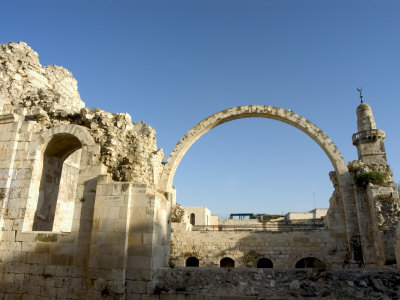 Whether ultimately the forecast proves to be true or not, the possibility of building a Third Temple near the Israeli stirred up religious life. The Vilna Gaon in Judaism is very great prestige.The specific name means "the Vilnius yeshiva (rabbinical academy) leader"; in Judaism but this nickname referred to asEliyahu was Shlomo Zalman rabbi (1720-1797), who lived and taught in the Lithuanian capital, and has thirty years of European fame writing explanatory It was. He stated that when the Jews in Jerusalem's Old Town Churvá synagogue rebuilt a third time, then construction of the Third Temple can begin.
Whether ultimately the forecast proves to be true or not, the possibility of building a Third Temple near the Israeli stirred up religious life. The Vilna Gaon in Judaism is very great prestige.The specific name means "the Vilnius yeshiva (rabbinical academy) leader"; in Judaism but this nickname referred to asEliyahu was Shlomo Zalman rabbi (1720-1797), who lived and taught in the Lithuanian capital, and has thirty years of European fame writing explanatory It was. He stated that when the Jews in Jerusalem's Old Town Churvá synagogue rebuilt a third time, then construction of the Third Temple can begin.
The synagogue in question in 1701 Polish Hasidic Jews began to build, but twenty years later, demolished even before the completion of their Arab creditors whose small Jewish community was unable to repay the construction loan was picked up. The building stood in ruins for a century - hence its name:churvá Hebrew ruin - and then just started to build up again in 1836 in Vilna Gaon's disciples in Jerusalem, which no longer has a master's. Then the huge, domed building in the Holy Land was the most important, most prestigious synagogue until 1948, when the War of Independence after the founding of the State of Israel, the Jordanian army destroy the ground again. After the recapture of Jerusalem in 1967 and the reunification of only one arch re-built it, some memento - this is the old Jewish quarter became known as a symbol ever since. Now, however, once again - for the third time - to rebuild the synagogue, March 15, 2010, which will be the transmission. Thus, if Vilna Gaon was right, then from 16 (from 1 Nisan) is the start of the current structure of the Third Temple.
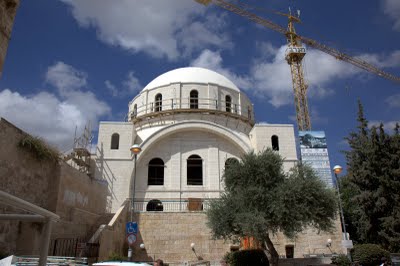 The Hebrew Gaon words that only the most prestigious rabbinical academies deserve leaders who, literally means excel, some people still translated as "genius". In fact, the Vilnius Eliyahu, Rabbi Mozart in question were similar prodigy of Jewish religious and academic life. Child since he was very strong, "camera" memory has become famous What I once read, noted that time it was common for Jewish fiúgyermekeket as soon as you talk to could. , began the Bible teach the foreground to five years of age are able to read Hebrew, and once you've read it the whole Bible is a relatively talented boys usually succeeded. - however, was unique in that the small Eliyahu also remarked on . all eleven age of the Talmud knew it by heart; characteristics photographic memory of that era over, if the copy it uses pierced somewhere with a needle and looked at where he went into the needle, and he could tell that the following pages which words pierced . His talent on record, according to a high degree of modesty matched: although already all over Europe at a young age have turned the most respected, elderly rabbis, if they could not decide whether or search out the scriptures something that he has always expressed that does not consider himself worthy of this honor - will be solved problem.
The Hebrew Gaon words that only the most prestigious rabbinical academies deserve leaders who, literally means excel, some people still translated as "genius". In fact, the Vilnius Eliyahu, Rabbi Mozart in question were similar prodigy of Jewish religious and academic life. Child since he was very strong, "camera" memory has become famous What I once read, noted that time it was common for Jewish fiúgyermekeket as soon as you talk to could. , began the Bible teach the foreground to five years of age are able to read Hebrew, and once you've read it the whole Bible is a relatively talented boys usually succeeded. - however, was unique in that the small Eliyahu also remarked on . all eleven age of the Talmud knew it by heart; characteristics photographic memory of that era over, if the copy it uses pierced somewhere with a needle and looked at where he went into the needle, and he could tell that the following pages which words pierced . His talent on record, according to a high degree of modesty matched: although already all over Europe at a young age have turned the most respected, elderly rabbis, if they could not decide whether or search out the scriptures something that he has always expressed that does not consider himself worthy of this honor - will be solved problem.
In 1777, when the starting time chászidizmus reached Vilnius, the mystical experience of God at the expense of bible study and a disciplined lifestyle also emphasizes Young Vilna Gaon kiközösítő the Kabbalistic movement was anathematized. Then it became known today as ultraortodoxia chászidizmus traditional Orthodox Judaism - until now. Interestingly, the later born Zionism were chászidok the main opposition within Judaism. - While many people have collaborated in the "traditional" Orthodox him (now the ultraortodoxok major groups as well) but Eliyahu's prestige was so great that even the chászidok to try somehow win for themselves - without success.
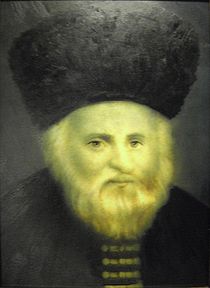 The Vilna Gaon also ahead of its time in terms of Zionism: some of his students were inspired to move to the Holy Land with a view to making the coming of the Messiah closer intentionally, hasten; and thus it became one of the ősatyjává religious Zionism. After his death, from 1808 individual students and their families, about five hundred people made aliyah this purpose, they established the MEA Sear Quarter in Jerusalem (which has since been mainly counterparts, the anti-Zionist ultraortodoxok inhabited), and they were built for the first time reconstructed the Churvá synagogue.According to Jewish tradition, as the month of Nisan in the deliverance from Egypt happened the same way in the final release will begin in the month of Nisan.This is further enhanced by the excitement in those who consider it a coincidence that the date fixed by the Vilna Gaon was accidentally Nisan 1 Jere came out. So in the spring of Jerusalem in some circles of believers increased messianic expectation can be expected. Soon, it turns out, then, whether it was right Vilna Gaon in the forecast.
The Vilna Gaon also ahead of its time in terms of Zionism: some of his students were inspired to move to the Holy Land with a view to making the coming of the Messiah closer intentionally, hasten; and thus it became one of the ősatyjává religious Zionism. After his death, from 1808 individual students and their families, about five hundred people made aliyah this purpose, they established the MEA Sear Quarter in Jerusalem (which has since been mainly counterparts, the anti-Zionist ultraortodoxok inhabited), and they were built for the first time reconstructed the Churvá synagogue.According to Jewish tradition, as the month of Nisan in the deliverance from Egypt happened the same way in the final release will begin in the month of Nisan.This is further enhanced by the excitement in those who consider it a coincidence that the date fixed by the Vilna Gaon was accidentally Nisan 1 Jere came out. So in the spring of Jerusalem in some circles of believers increased messianic expectation can be expected. Soon, it turns out, then, whether it was right Vilna Gaon in the forecast.



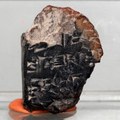

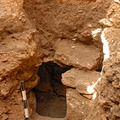
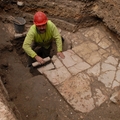
No comments:
Post a Comment